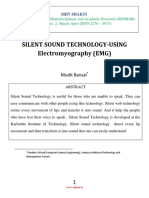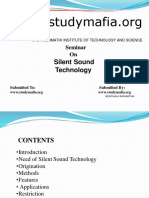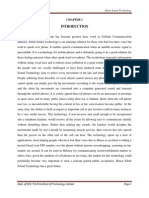100% found this document useful (1 vote)
20K views15 pagesSilent Sound Technology
This document discusses silent sound technology, which detects lip movements and converts them to electrical signals that can be translated into speech or transmitted over phone lines. It allows people who have lost their voice to communicate by phone and tells confidential information privately. The technology is expected within the next 10 years and will eliminate issues like having to take calls in private or apologize for leaving meetings. It works by monitoring muscle movements in the face through electromyography or image processing.
Uploaded by
raviudrCopyright
© Attribution Non-Commercial (BY-NC)
We take content rights seriously. If you suspect this is your content, claim it here.
Available Formats
Download as PPT, PDF, TXT or read online on Scribd
100% found this document useful (1 vote)
20K views15 pagesSilent Sound Technology
This document discusses silent sound technology, which detects lip movements and converts them to electrical signals that can be translated into speech or transmitted over phone lines. It allows people who have lost their voice to communicate by phone and tells confidential information privately. The technology is expected within the next 10 years and will eliminate issues like having to take calls in private or apologize for leaving meetings. It works by monitoring muscle movements in the face through electromyography or image processing.
Uploaded by
raviudrCopyright
© Attribution Non-Commercial (BY-NC)
We take content rights seriously. If you suspect this is your content, claim it here.
Available Formats
Download as PPT, PDF, TXT or read online on Scribd
/ 15




























































































